Matador Brewers — the Driving Force Behind Our Love of Craft Beer
There are few things more therapeutic than meeting a friend at a favorite local watering hole after a long day at work, pulling up a chair, watching the bartender grab a frosty pint glass from the freezer and then pull the tap down. After the golden brew cascades from the tap, the bartender places the cold beer before you. You take a sip.
Chilled, crisp, maybe a bit hoppy. Bliss.
A decade ago, this was only possible, for the most part, at chain restaurants, local taverns and bars. Today, San Fernando Valley and Greater Los Angeles denizens can pick from countless breweries, big or small, locally or abroad.
As recently as the early ’00s, “big beer” dominated production in the United States, with companies such as Anheuser-Busch, MillerCoors and Pabst Brewing Company holding 90 percent market share. In 2008, however, independent beer — beer brewed and distributed by non-major brewing corporations — began to bridge the gap, growing its share of the market to 24 percent by 2019.
And now, a moment for brewing terminology:
Independent beer distinguishes itself from big beer, but this is not necessarily the case for craft beer — major brewing companies can, and do, make craft beer. More on that in a bit.
Matadors have played a crucial role in the craft brewing boom at home as well as overseas. Vic Chouchanian ’12 (Mathematics / Teaching Credential), founder of award-winning San Fernando Brewing Co., is a prime example. Recently, we tapped two more stories — one near campus and one across the sea. Pull up a bar stool and meet:
The Olson Cousins, 8one8 Brewing
In the Valley, Bryan and Derrick Olson ’10 (Manufacturing Systems Engineering), the cousin duo behind 8one8 Brewing, one of the area’s most successful breweries, planted their beer flag just four miles southwest of campus, across the street from Aerojet Rocketdyne in Canoga Park.
As is the case for many brewers, Derrick and Bryan’s family love affair with craft beer began with homebrewing in June 2012. The cousins brewed a blonde with an extract kit — which new brewers use because it simplifies the brewing process — they’d purchased at a local HomeBrew shop.
They drank their entire first batch, a great sign in beer brewing. Then, inspiration and entrepreneurial spirit struck in 2014: The Olsons filed paperwork with the state to open up their own brewery. In addition to the Valley area code, the cousins named their brewery after the day it was approved for operation: August 18, 2015 (8/18). Their first wholesale keg sold that November, and the tasting room opened in May 2018.
After their first homebrew, they brewed more batches and used their friends as taste-testers. With enthusiastic responses, Derrick soon tapped his engineering education to build bigger tanks, eventually constructing the 31-gallon tank that is now used to brew test batches.
Derrick attributed his career and business success, in part, to a couple of his CSUN professors: Tarek Shraibati and Behzad Bavarian, who gave him the technical and practical knowledge he needed to apply to his venture, he said.
As the business half of 8one8 Brewing, Bryan answered a question common among beer newbies: What exactly makes a beer “craft?”
“Craft is a category now, and that’s how the whole concept of ‘independent’ was born,” he said. “We just wanted to say, ‘these are independent breweries, not big beer.
“Breweries are categorized by production size and ownership percentage. That’s the technical side,” he added. “What the consumer will notice at a small, local brewery is a higher level of freshness, wide-to-narrow focus on styles and experimental brews.”
Any beer brewing process can involve between five and nine steps. For instance, Heineken, the second-largest brewery in the world, employs a nine-step brewing method: mashing, boiling, lautering (where the mash is separated into clear, non-alcoholic liquid wort and residual grain), boiling (again), cooling, fermenting (where the liquid becomes alcoholic), lagering (specific to the smooth-drinking beer), filtering and bottling.
Smaller craft breweries, which have grown exponentially in the past 10 years, tend to use between seven and eight steps in their brewing process.
The Olson cousins have used different methods in their brewing process, but it begins with malting (though they don’t do this on site — their grains come pre-malted by the manufacturer). Malting is the process by which the grains used to make beer are heated and dried to isolate enzymes, a substance that acts as a catalyst to bring about a specific biochemical reaction. In this case, the biochemical reaction is to create alcohol.
All that separates the brewery from their Canoga Park taproom is a wall with a 3-by-6-foot window, which frames their stainless-steel tanks as a sleek, cool backdrop to the bar. At 8one8, you’ll find crisp, refreshing beers with local monikers, like the Valley Girl Blonde and the Matador Red.
You can also find the Matador Red at the Pub in the University Student Union, where it’s been on tap since March 2016. According to Bryan Olson, thirsty Pub patrons go through about a keg a week.
Matt Jimenez, Goose Island Beer Co.
Alumnus, expat and self-proclaimed military brat Matt Jimenez ’11 (History) found brewing success far, far from Los Angeles’ sunny shores — and it happened by chance.
Inspired by his love of sports and the film “Jerry Maguire,” Jimenez grew up dreaming of becoming a sports agent.
After college, Jimenez was unsure of what he wanted to do, but his parents urged him to stay true to one core value they’d instilled in their three sons: Be happy doing what you’re doing.
So how did a history major who wanted to be a sports agent end up in Shanghai, China, 6,000 miles from home? And how did he find happiness as China’s head brewer for Goose Island Beer Co., owned by Anheuser-Busch, one of the largest brewing companies in the world?
Jimenez and his girlfriend, Barbara Poppell ’11 (Child and Adolescent Development), met and fell in love at CSUN: They met through involvement in their fraternity and sorority, Zeta Beta Tau and Alpha Xi Delta.
“My girlfriend’s family moved to Shanghai in 1999, and she attended high school here,” said Jimenez, who grew up primarily in New Hampshire. “She told me there were a lot of opportunities [in Shanghai], and I took that leap of faith [after graduation].”
Like the Olson cousins, Jimenez — a fan of working with his hands — discovered his love for craft beer through homebrewing. Jimenez became more involved in Chinese brewing by reaching out to and working with prominent brewers.
Jimenez credited Mike Sherretz, a local retired expat who owns a homebrewing store in Shanghai, for guiding him and mentoring him on brewing techniques.
To Jimenez’s surprise, his involvement in the homebrewing community grew exponentially as he participated in local beer festivals and met local brewers.
Jimenez started his career at a smaller brewery in Shanghai called Boxing Cat Brewing, rising to head brewer by 2017. That trajectory did not go unnoticed by former president of Goose Island Brewing Ken Stout, Jimenez said. In fact, Stout mentioned this during Jimenez’s job interview.
Anheuser-Busch acquired Boxing Cat Brewery in 2017, and Jimenez was asked to go to Harbin, China, to brew in the Harbin AB-InBev plant. There, he cross-brewed Boxing Cat Brewery beers for a year before joining Goose Island Beer Co.
Goose Island itself started as a craft brewpub in Chicago in 1988. After runaway success, Anheuser-Busch bought the company in 2011.
As the head brewer for Goose Island Brewhouse in Putian, China, Jimenez has a unique perspective on beer trends in the U.S. and China.
“The U.S. is moving more toward low-calorie [and thus low-alcoholic] beers,” Jimenez said. “Sam Adams came out with a beer that has electrolytes. And I like that trend a lot — it’s nice to be functional after five or six beers,” he added, referring to Sam Adams’ 26.2 Brew, brewed in partnership with the Boston Athletic Association (host of the fabled Boston Marathon). The beer is 120 calories and has a 4 percent alcohol-by-volume (ABV).
“In China, the original beer trend is lagers and wheats,” Jimenez said. “But with craft beer making its move into China, I see more local consumers enjoying an India Pale Ale,” he said, referring to the IPA, a hoppy beer style within the broader category of pale ale — which is wildly popular in the U.S.
Recently, however, Jimenez noticed a shift.
“People are getting more into goses and kettle sours,” he said, referencing the warm, wheat beer and sour beers that originated in Germany and Belgium. The shift from hop-forward and more bitter IPAs to lighter, fruit-forward goses and sour beers is curious to Jimenez.
“It’s very interesting to watch the trends change,” he said. “It’s a unique thing to see.”
China has a relatively new relationship to craft beer, but that relationship is quickly growing — which the Associated Press has correlated to its growing middle class.
Like Jimenez, the Olsons noted that the best part of brewing is seeing people enjoy the product they work endlessly to perfect.
Yaniv Raymond ’18 (Communication Studies) is one of those people.
“There are so many reasons to keep coming back to 8one8,” Raymond said. “We’re investing in a local business, supporting a fellow Matador and drinking delicious beer. I can’t think of a reason not to come back.”

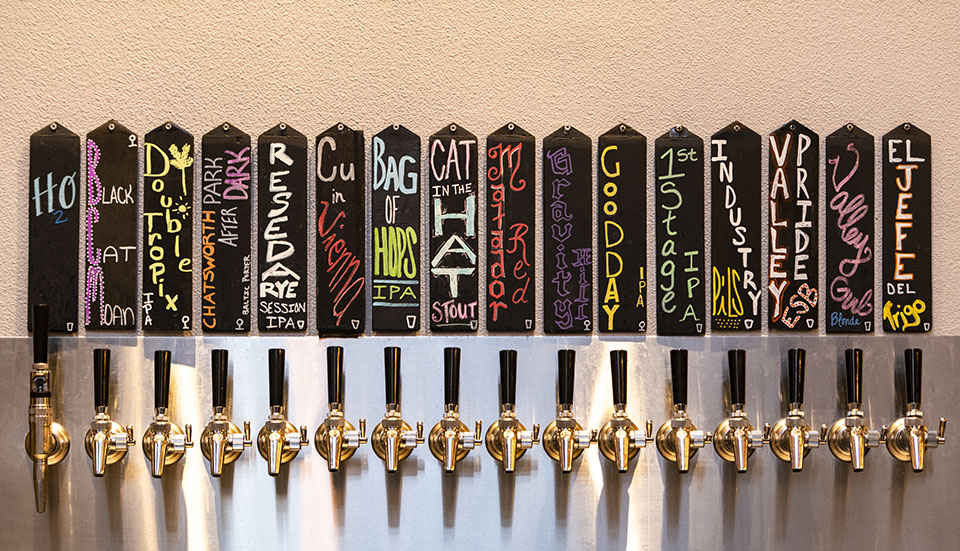
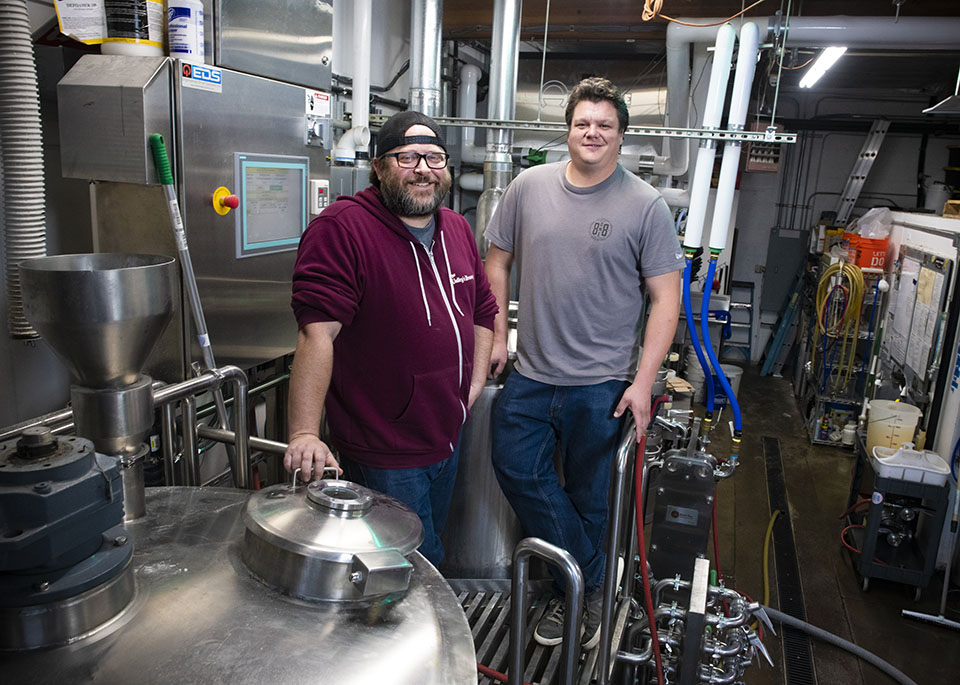
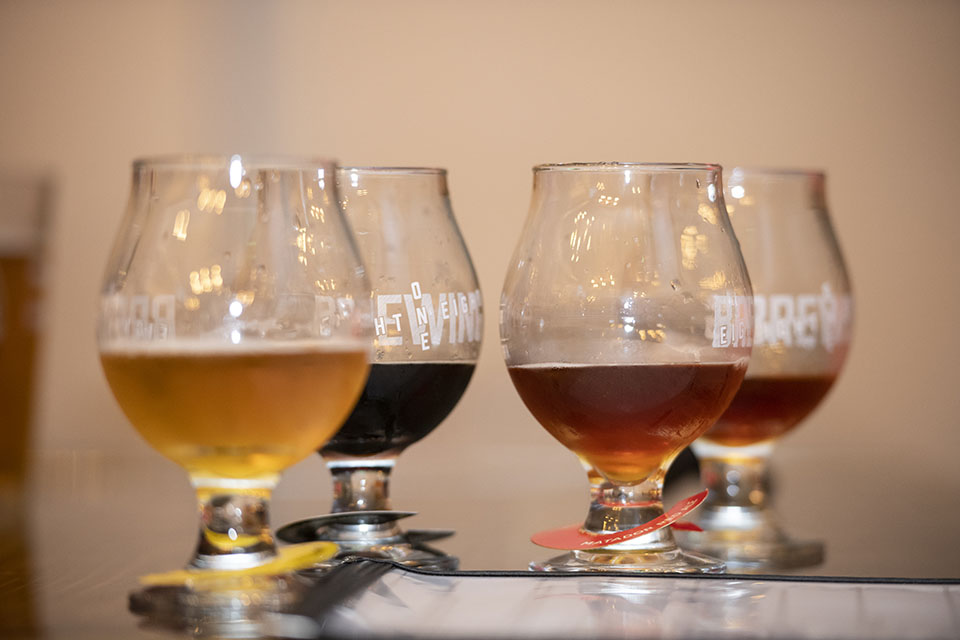
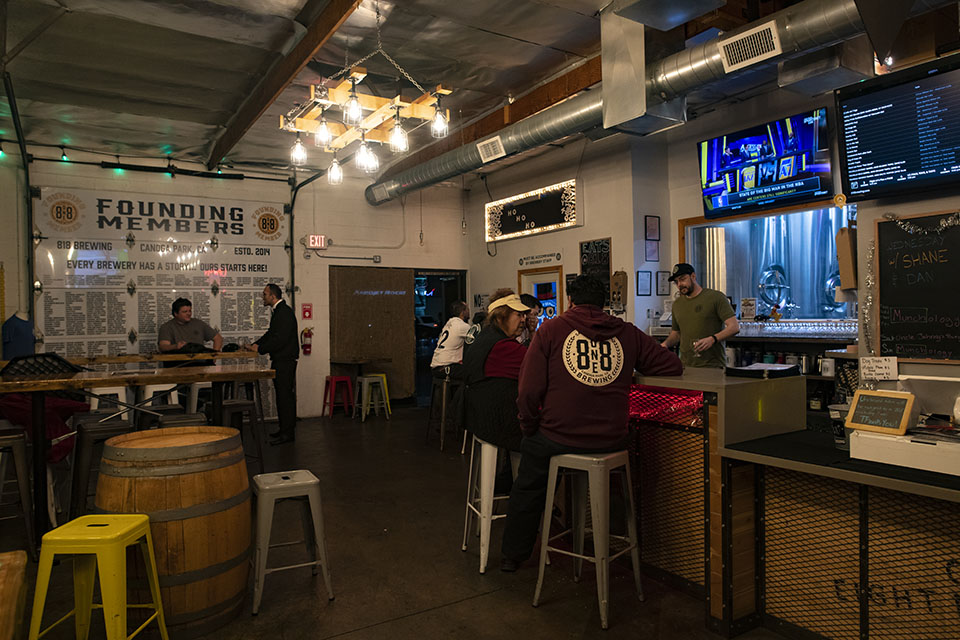
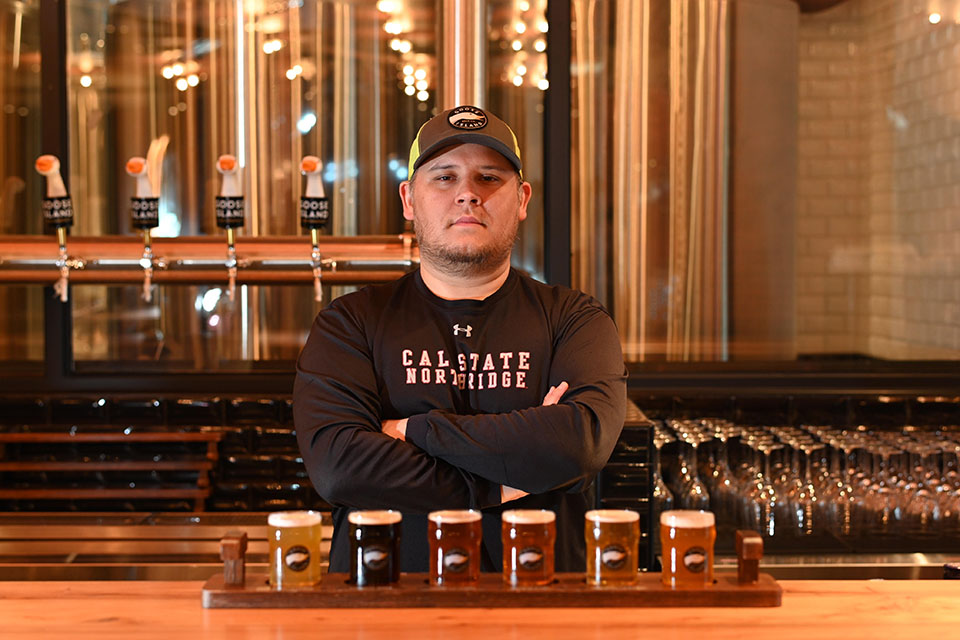

 experience
experience